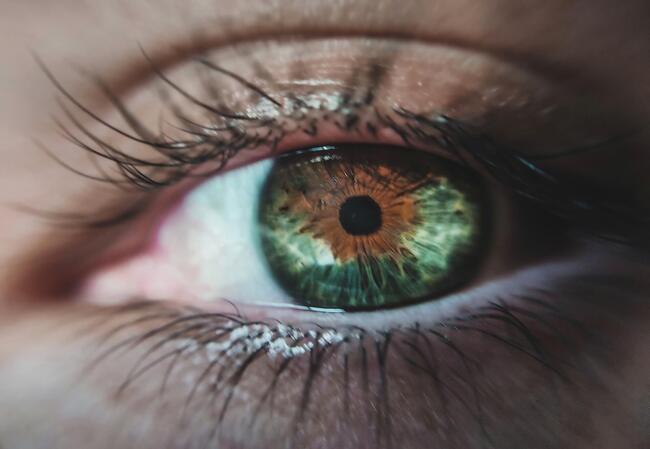Cataracts and glaucoma are two prevalent eye conditions that often coexist, posing unique challenges for individuals seeking vision correction. Cataract surgery, a common and highly successful procedure, becomes a critical consideration when coupled with glaucoma.
The prospect of undergoing surgery for cataracts while managing glaucoma prompts the question: Is it safe? In this article, we explore the safety and considerations surrounding cataract surgery in individuals with glaucoma, shedding light on managing cataracts in conjunction with glaucoma and who is not eligible for the combined surgery.
What is a Cataract?
Cataracts are a common eye condition characterized by clouding the natural lens behind the iris and pupil. This clouding occurs gradually over time, leading to a progressive loss of transparency and resulting in blurred or impaired vision.
Cataracts typically develop with age but can also be influenced by genetics, certain medications, or prolonged exposure to ultraviolet radiation. Symptoms may include difficulty seeing in low light, increased sensitivity to glare, and diminished color perception.
Cataract surgery, a routine and highly successful procedure involves replacing the cloudy lens with an artificial intraocular lens, restoring clarity and improving vision.

What is Glaucoma?
Glaucoma is a progressive eye condition characterized by increased intraocular pressure, which can lead to optic nerve damage and, if left untreated, irreversible vision loss. The elevated pressure within the eye results from a buildup of aqueous humor, which nourishes the eye.
Glaucoma often develops slowly and asymptomatically, earning it the moniker “the silent thief of sight.” As the optic nerve undergoes damage, peripheral vision is typically affected first, with advanced stages leading to central vision impairment.
Regular eye examinations are crucial for early detection and management, as early intervention can help control intraocular pressure and mitigate the progression of vision loss associated with glaucoma.
How to Manage Cataracts in Conjunction with Glaucoma?
Cataracts and glaucoma stand among the most widespread eye conditions globally, particularly as individuals age. It is not rare for these two diseases to coexist. When a cataract impedes clear vision and eye pressure remains suboptimal despite medication or laser treatment, a healthcare professional may recommend combined cataract-glaucoma surgery. This integrated approach aims to address both conditions simultaneously, ensuring improved visual clarity and effective management of glaucoma.
Also read: 10 Surefire Ways to Get Better at Lifeguard Near Me
Combined Cataract and Glaucoma Surgery
When considering combined cataract and glaucoma surgery, your ophthalmologist conducts a thorough assessment to tailor your best treatment plan.
They evaluate the progression of your glaucoma, assess the effectiveness of glaucoma medications or laser surgery in reducing eye pressure, and determine if cataracts impact your daily activities.
Based on these considerations, your ophthalmologist recommends a treatment approach with the lowest risk and the potential for enhanced vision.
Opting for combined surgery streamlines the process, making it more manageable and less traumatic. The single administration of anesthesia reduces risks, providing a safer experience.
Successful glaucoma surgery may allow you to reduce or discontinue glaucoma medications, offering relief from the challenges associated with eye drops. Moreover, the combined procedure helps maintain consistent ocular pressure after cataract surgery, preventing sudden increases.
Not only is the combined approach more cost-effective, but successful glaucoma surgery may also lead to savings by eliminating or reducing the need for ongoing glaucoma medication.
Can Cataracts Cause Increased Eye Pressure?
Contrary to common misconception, cataracts do not induce increased eye pressure; they impact vision by clouding the eye’s lens.
On the other hand, glaucoma arises from impaired drainage in the eye, resulting in fluid accumulation and elevated intraocular pressure, potentially leading to optic nerve damage and vision loss. Early diagnosis is crucial for effective glaucoma management.
Cataract Surgery with Glaucoma: Is It Safe?
While each case varies regarding the safety of cataract surgery in individuals with glaucoma, the procedure is generally considered safe. However, it’s important to note that cataract surgery can temporarily raise eye pressure. For those with glaucoma, opting for simultaneous cataract and glaucoma surgery is a viable and advantageous option.
Who is Not Eligible for Combined Surgery?
Only some people are candidates for combined surgery; considerations vary based on individual circumstances. When glaucoma requires attention, even if cataracts aren’t affecting vision, prioritizing glaucoma surgery first is advisable. Conversely, for those with well-controlled glaucoma but impaired vision due to cataracts, cataract surgery, with or without Minimally Invasive Glaucoma Surgery (MIGS), becomes a favorable option.
In cases where individuals experience narrow- or closed-angle glaucoma alongside cataracts, cataract surgery becomes imperative for managing narrow-angle glaucoma. The forward displacement of the iris in this form of glaucoma obstructs fluid drainage, increasing eye pressure.
Cataract surgery, coupled with or without MIGS interventions, addresses this condition. Removing the cataractous lens improves vision and can reduce ocular pressure, potentially enhancing control over glaucoma. The decision on combined surgery is nuanced and requires a tailored approach, considering the unique characteristics of each patient’s eye health.
Conclusion
Cataract surgery with glaucoma is generally deemed safe and effective when approached with careful consideration and advancements like glaucoma laser surgery. As technology advances, the safety and success of these combined surgeries represent a promising stride in enhancing vision and preserving eye health.


